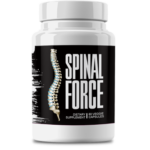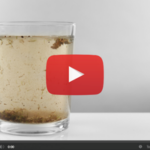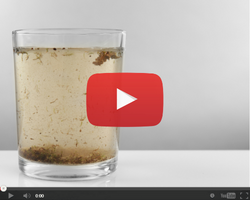This Village-Made Chinese Pain Reliever Eliminates Back And Joint Pain!
Diet and Treatment for Gout in Hands: Foods to Eat and Avoid

Introduction to Gout in Hands
What is Gout?
Gout is a type of arthritis characterized by sudden, severe attacks of pain, redness, and tenderness in joints. It occurs when urate crystals accumulate in your joint, causing inflammation and intense pain. Urate crystals can form when you have high levels of uric acid in your blood. Your body produces uric acid when it breaks down purines, substances that are found naturally in your body as well as in certain foods.
Symptoms of Gout in Hands
When gout affects the hands, it can lead to symptoms such as intense joint pain, swelling, redness, and warmth. The pain is often sudden and severe, typically affecting one joint at a time. Over time, repeated bouts of gout can lead to permanent joint damage. Identifying these symptoms early and seeking treatment for gout in hands can help manage the condition effectively and reduce the frequency of flare-ups.
Importance of Diet in Managing Gout
Diet plays a crucial role in managing gout. Certain foods can increase uric acid levels, while others can help reduce them. By making informed dietary choices, you can help control your uric acid levels and prevent gout flare-ups. This blog post aims to provide you with valuable information on the treatment for gout in hands, focusing on foods to eat and avoid, as well as other lifestyle changes to support your treatment plan.
Treatment for Gout in Hands: Medical Approaches
Medications for Gout
Medications are a common treatment for gout in hands. They can help reduce pain, inflammation, and uric acid levels. Nonsteroidal anti-inflammatory drugs (NSAIDs), such as ibuprofen and naproxen, are often prescribed to manage pain and inflammation. In some cases, doctors may prescribe medications that help reduce uric acid production or improve its excretion from the body. These medications play a key role in managing gout symptoms and preventing future flare-ups.
Corticosteroids and Anti-Inflammatory Drugs
Corticosteroids are another option for treating gout in hands. These medications can be taken orally or injected directly into the affected joint. They work by reducing inflammation and providing relief from pain. However, corticosteroids are typically used for short-term treatment due to potential side effects. Anti-inflammatory drugs, such as colchicine, can also be prescribed to help manage acute gout attacks and reduce the frequency of flare-ups.
Physical Therapy and Exercise
Physical therapy and exercise can help improve joint function and reduce pain associated with gout in hands. A physical therapist can develop a personalized exercise program to strengthen the muscles around the affected joints, improve flexibility, and enhance overall mobility. Regular exercise can also help with weight management, which is important for reducing stress on the joints and preventing gout flare-ups.
Foods to Include in Your Diet
Low-Purine Foods
Incorporating low-purine foods into your diet is essential for managing gout. Low-purine foods include fruits, vegetables, whole grains, and low-fat dairy products. These foods help reduce uric acid levels in the blood and minimize the risk of gout attacks. By focusing on a diet rich in low-purine foods, you can support your treatment plan and improve your overall health.
Vitamin C-Rich Foods
Vitamin C has been shown to help lower uric acid levels in the blood, making it a valuable addition to your diet. Foods rich in vitamin C include citrus fruits, strawberries, bell peppers, and broccoli. Including these foods in your daily meals can help reduce the risk of gout flare-ups and support overall joint health. It's important to aim for a balanced diet that provides a variety of nutrients to support your overall well-being.
Hydration and Water Intake
Staying hydrated is crucial for managing gout. Drinking plenty of water helps flush out excess uric acid from the body, reducing the risk of crystal formation in the joints. Aim to drink at least eight glasses of water a day, and consider incorporating other hydrating beverages, such as herbal teas, into your routine. Proper hydration supports overall health and can help prevent gout flare-ups.
Foods to Avoid for Gout in Hands
High-Purine Foods
Avoiding high-purine foods is essential for managing gout. High-purine foods include red meat, organ meats, shellfish, and certain types of fish, such as anchovies and sardines. These foods can increase uric acid levels in the blood, leading to gout flare-ups. By limiting your intake of high-purine foods, you can help control your uric acid levels and reduce the frequency of gout attacks.
Sugary Beverages
Sugary beverages, such as soda and fruit juices with added sugars, can contribute to higher uric acid levels and increase the risk of gout attacks. These drinks can also lead to weight gain, which can put additional stress on the joints. Opt for water, herbal teas, or natural fruit juices without added sugars to stay hydrated and support your gout treatment plan.
Alcoholic Drinks
Alcoholic beverages, especially beer and spirits, can increase uric acid levels and trigger gout attacks. Beer is particularly high in purines, which can exacerbate gout symptoms. Limiting or avoiding alcohol consumption is an important step in managing gout. If you choose to drink alcohol, do so in moderation and opt for wine over beer to minimize the impact on your uric acid levels.
Natural Remedies and Supplements
Herbal Remedies
Several herbal remedies can help manage gout symptoms. For example, ginger and turmeric have anti-inflammatory properties that can reduce pain and inflammation. Devil's claw and nettle leaf are other herbs that may provide relief from gout symptoms. Always consult with your healthcare provider before incorporating herbal remedies into your treatment plan to ensure they are safe and effective for your specific condition.
Omega-3 Fatty Acids
Omega-3 fatty acids, found in fatty fish like salmon and mackerel, as well as in flaxseeds and walnuts, have anti-inflammatory properties that can help manage gout symptoms. These healthy fats can reduce inflammation and improve overall joint health. Consider adding omega-3-rich foods to your diet or taking a high-quality fish oil supplement to support your gout treatment plan and promote overall well-being.
Cherries and Cherry Juice
Cherries and cherry juice have been shown to help reduce uric acid levels and decrease the risk of gout flare-ups. Cherries contain anthocyanins, which have anti-inflammatory properties. Incorporating fresh or frozen cherries, as well as cherry juice, into your diet can provide additional support for managing gout. Aim for a daily intake of cherries or cherry juice to help prevent gout attacks and support joint health.
Lifestyle Changes to Support Gout Treatment
Weight Management
Maintaining a healthy weight is important for managing gout. Excess weight can put additional stress on your joints and increase the risk of gout flare-ups. Adopting a balanced diet and engaging in regular physical activity can help you achieve and maintain a healthy weight. Weight management not only supports your gout treatment plan but also improves overall health and reduces the risk of other chronic conditions.
Regular Exercise
Regular exercise is essential for managing gout and maintaining joint health. Engaging in activities such as walking, swimming, and gentle stretching can help improve joint mobility and reduce pain. Exercise also supports weight management and overall well-being. Aim for at least 30 minutes of moderate-intensity exercise most days of the week to support your gout treatment plan and enhance your quality of life.
Stress Reduction Techniques
Stress can exacerbate gout symptoms and trigger flare-ups. Incorporating stress reduction techniques into your daily routine can help manage stress levels and support your gout treatment plan. Practices such as mindfulness meditation, deep breathing exercises, and yoga can help reduce stress and improve overall well-being. Finding healthy ways to manage stress is an important aspect of long-term gout management.
Monitoring and Managing Gout Flare-Ups
Recognizing Early Symptoms
Recognizing early symptoms of gout flare-ups can help you take prompt action to manage the condition. Early signs of a flare-up may include joint pain, swelling, redness, and warmth. If you notice these symptoms, consult your healthcare provider for appropriate treatment. Taking quick action can help reduce the severity of the flare-up and prevent further joint damage.
Keeping a Food Diary
Keeping a food diary can help you identify dietary triggers for gout flare-ups. By recording what you eat and drink, you can track patterns and make informed dietary choices. This can help you avoid foods that trigger symptoms and support your gout treatment plan. A food diary can also provide valuable information to your healthcare provider, helping them develop a personalized treatment plan for managing gout.
Regular Check-Ups with Your Doctor
Regular check-ups with your doctor are essential for managing gout. Your healthcare provider can monitor your uric acid levels, assess your joint health, and adjust your treatment plan as needed. Regular check-ups also provide an opportunity to discuss any concerns or symptoms you may be experiencing. Working closely with your healthcare provider is key to effective long-term management of gout in hands.
Conclusion: Long-Term Management Strategies
Combining Diet and Medical Treatments
Combining dietary changes with medical treatments is essential for effective long-term management of gout. A balanced diet that includes low-purine foods, vitamin C-rich foods, and proper hydration can help control uric acid levels and prevent flare-ups. Medical treatments, including medications and physical therapy, provide additional support for managing symptoms and improving joint health. Working closely with your healthcare provider can help you develop a comprehensive treatment plan that addresses your individual needs.
Importance of Consistency
Consistency is crucial for managing gout effectively. Adhering to your treatment plan, including dietary changes, medication, and lifestyle modifications, can help prevent flare-ups and improve overall joint health. It's important to stay committed to your treatment plan, even when you are not experiencing symptoms. Consistent management can help reduce the frequency and severity of gout attacks, allowing you to enjoy a better quality of life.
Future Research and Developments
Ongoing research continues to explore new treatments and strategies for managing gout. Advances in medical research may lead to the development of new medications and therapies that can provide additional support for individuals with gout. Staying informed about the latest research and developments can help you and your healthcare provider make informed decisions about your treatment plan. Future advancements may offer new hope for individuals living with gout, improving their ability to manage the condition and enjoy a better quality of life.








